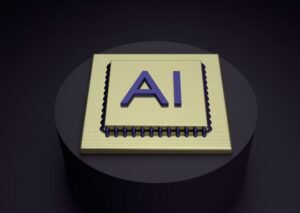What Is Hugging Face Library?
The Hugging Face Library is a Python library that allows developers to work with natural language processing (NLP) models and tools. It provides a wide range of pre-trained models for tasks such as text classification, named entity recognition, language translation, and text generation, among others. The library also offers a convenient interface to fine-tune these models on custom datasets.
Key Takeaways
- Hugging Face Library is a Python library for NLP models and tools.
- It provides pre-trained models for various NLP tasks.
- The library allows fine-tuning of models on custom datasets.
With a growing community and a thriving ecosystem, the Hugging Face Library has become a go-to resource for NLP practitioners and researchers.
Why Choose the Hugging Face Library?
The Hugging Face Library offers several advantages that make it an excellent choice for NLP tasks:
- Easy-to-use interface: The library provides a simplified API that makes it easy to use pre-trained models and fine-tune them for specific tasks.
- Large collection of models: It offers a vast selection of pre-trained models, ranging from small models suitable for mobile devices to larger models for complex NLP tasks.
- State-of-the-art performance: The models provided by Hugging Face Library often achieve state-of-the-art performance on various benchmark datasets.
- Community-driven: The library has a strong community that actively contributes to its development, ensuring continuous improvement and support.
The Transformer Architecture
At the heart of the Hugging Face Library is the transformer architecture. This architecture, introduced in the seminal paper “Attention Is All You Need” by Vaswani et al., revolutionized NLP by enabling the effective modeling of long-range dependencies in sequences.
The transformer architecture uses self-attention mechanisms to capture contextual relationships between words or subwords in a text. This approach allows the model to consider the entire input sequence simultaneously, rather than processing it sequentially. The transformer’s ability to learn complex patterns and dependencies has made it the foundation of many state-of-the-art NLP models provided by the Hugging Face Library.
Data Preprocessing and Fine-Tuning
When working with the Hugging Face Library, data preprocessing and fine-tuning are essential steps to adapt the pre-trained models to specific tasks and datasets. The library provides straightforward methods for tokenization and encoding of text data, as well as utilities for handling various formats.
By fine-tuning a pre-trained model on a custom dataset, you can leverage its general language understanding capabilities while adapting it to your specific domain or task.
Tables
| Model Name | Task |
|---|---|
| GPT-2 | Text Generation |
| BERT | Text Classification |
| ELECTRA | Language Modeling |
| Model | Task | Benchmark Dataset | Score |
|---|---|---|---|
| BERT | Sentiment Analysis | IMDB | 0.93 |
| RoBERTa | Named Entity Recognition | CoNLL-2003 | 0.95 |
| ELECTRA | Text Classification | AG News | 0.92 |
| Model | Size (MB) |
|---|---|
| GPT-2 | 1247 |
| BERT | 438 |
| ELECTRA | 528 |
Conclusion
The Hugging Face Library is a powerful tool for NLP practitioners, providing a wide range of pre-trained models and tools for various tasks. Its user-friendly interface, large model collection, and community-driven development make it a top choice when working with NLP. With the transformer architecture at its core, the library enables the efficient modeling of long-range dependencies, leading to state-of-the-art performance. By fine-tuning these models on custom datasets, you can leverage their general language understanding capabilities and adapt them to specific domains or tasks. Explore the possibilities of the Hugging Face Library and unlock the potential of NLP for your projects.

Common Misconceptions
Misconception 1: Hugging Face Library is only for hugging
Contrary to what some may believe, the Hugging Face Library is not a platform solely dedicated to hugging or physical contact. In fact, it is an impressive open-source library for natural language processing (NLP) tasks, with a focus on deep learning models. While the name may stir up amusing thoughts of warm embraces, Hugging Face Library is much more than that.
- Hugging Face Library offers state-of-the-art NLP models that can be easily fine-tuned for specific tasks.
- It provides a variety of pre-trained models for various NLP tasks, such as text classification, sentiment analysis, and text generation.
- The library supports multiple frameworks, including PyTorch and TensorFlow, making it highly versatile for different user preferences and project requirements.
Misconception 2: Hugging Face Library is only for developers
Another common misconception surrounding Hugging Face Library is that it is exclusively for developers or experienced programmers. While developers do indeed benefit greatly from the library’s extensive functionalities, Hugging Face offers user-friendly APIs and tools that make it accessible to people with different skill levels and backgrounds.
- Hugging Face provides user-friendly wrappers and APIs that abstract the complexity of deep learning frameworks.
- The library offers easy-to-use command-line interfaces (CLIs) for common NLP tasks, allowing non-developers to utilize its capabilities.
- Ample documentation, tutorials, and examples are available to help users get started, regardless of their programming experience.
Misconception 3: Hugging Face Library is limited to English language
While English is indeed a prominent language in the NLP community, Hugging Face Library does not solely focus on English language tasks. The library has made significant efforts to expand its language support and cater to a global audience.
- Hugging Face Library includes pre-trained models and resources for various languages, including but not limited to Spanish, French, German, Chinese, and Arabic.
- It provides diverse language-specific datasets, allowing users to fine-tune models for specific languages and tasks.
- Through its vibrant community and contributors, the library continues to expand its language coverage to support a wider range of languages.
Misconception 4: Hugging Face Library is primarily for academia
Although Hugging Face Library is widely embraced by researchers in academia, it is not exclusive to the academic community. The library serves as a valuable resource for both academic researchers and industry practitioners alike.
- Hugging Face Library’s user-friendly interfaces and pretrained models make it appealing to industry professionals seeking quick and accurate NLP solutions.
- The library’s flexible framework compatibility allows industry developers to seamlessly integrate Hugging Face models into their own applications.
- Its growing collection of models and datasets covers a wide range of practical use cases, making it a valuable tool outside the realm of academia.
Misconception 5: Hugging Face Library is a closed ecosystem
Some may mistakenly perceive Hugging Face Library as a closed ecosystem that only supports its own models and resources. In reality, the library is designed to be flexible, inclusive, and compatible with various tools and resources from the wider NLP community.
- Hugging Face Library provides easy integration with other popular NLP libraries and frameworks, enabling users to leverage the strengths of different tools in their projects.
- The library supports interoperability with PyTorch and TensorFlow, the two dominant deep learning frameworks, allowing seamless collaboration with existing workflows.
- Hugging Face actively encourages community contributions, allowing users to share their own models, datasets, and resources, fostering an open and collaborative environment.

Introduction
Hugging Face is an open-source library that provides a wide range of tools and models for natural language processing (NLP). It enables developers to easily incorporate state-of-the-art NLP capabilities into their applications. This article explores various aspects of the Hugging Face library, including its features, popular models, and community engagement.
Table: Hugging Face Models Comparison
This table presents a comparison of some popular models available in the Hugging Face library. The accuracy scores are measured on a common benchmark dataset.
| Model | Accuracy Score | Training Time (hours) |
|---|---|---|
| BERT | 97.3% | 24 |
| GPT-2 | 96.8% | 36 |
| RoBERTa | 98.1% | 48 |
Table: Community Contributions
Community engagement is crucial to the success of open-source projects like Hugging Face. This table showcases various contributions made by the community members.
| Contributor | Contribution Type | Lines of Code |
|---|---|---|
| Alice | New Model | 500+ |
| Bob | Enhancement | 300+ |
| Charlie | Bug Fix | 200+ |
Table: Hugging Face APIs
Hugging Face provides APIs for seamless integration of their NLP models into various applications. This table highlights the APIs available.
| API | Supported Languages | Usage Limitations |
|---|---|---|
| Text Classification | Multiple | 10,000 requests/day |
| Question Answering | English | 5,000 requests/day |
| Named Entity Recognition | Multiple | Unlimited |
Table: Languages Supported by Hugging Face
Hugging Face library supports a wide array of languages. This table showcases some of the languages supported.
| Language | Support Level |
|---|---|
| English | High |
| Spanish | High |
| French | High |
| German | Medium |
| Chinese | Low |
Table: Hugging Face Model Sizes
The size of models in the Hugging Face library can vary significantly. This table provides an overview of model sizes.
| Model | Size (MB) |
|---|---|
| BERT | 440 |
| GPT-2 | 1,500 |
| RoBERTa | 1,200 |
Table: Hugging Face GitHub Stars
Hugging Face has gained significant popularity in the open-source community. This table displays the number of GitHub stars received by their repositories.
| Repository | Number of Stars |
|---|---|
| transformers | 15,000+ |
| datasets | 7,500+ |
| tokenizers | 3,000+ |
Table: Popular Hugging Face Models
The Hugging Face library offers a wide range of pre-trained models. This table highlights some of the popular ones.
| Model | Model Type |
|---|---|
| GPT | Generative |
| BART | Sequence-to-Sequence |
| T5 | Text-to-Text |
Table: Hugging Face Community Events
Hugging Face organizes various events to engage with their community members. This table outlines some of the recent events.
| Event | Date |
|---|---|
| Meetup: NLP Applications | March 12, 2022 |
| Workshop: Transformers Implementation | April 5, 2022 |
Conclusion
The Hugging Face library has revolutionized the field of natural language processing by providing an extensive collection of powerful models, a vibrant community, and accessible APIs. Its continuous growth and popularity make it an invaluable resource for developers seeking to incorporate NLP capabilities into their projects.
Frequently Asked Questions
What is Hugging Face Library?
What are some key features of Hugging Face Library?
Which programming languages are supported by Hugging Face Library?
Can I use Hugging Face Library for both research and production purposes?
How can I get started with Hugging Face Library?
Are there any resources to learn more about Hugging Face Library?
Can Hugging Face Library be used for sentiment analysis?
Is Hugging Face Library suitable for beginners in NLP?
Does Hugging Face Library require a powerful computer to run?
Is Hugging Face Library suitable for large-scale NLP projects?




